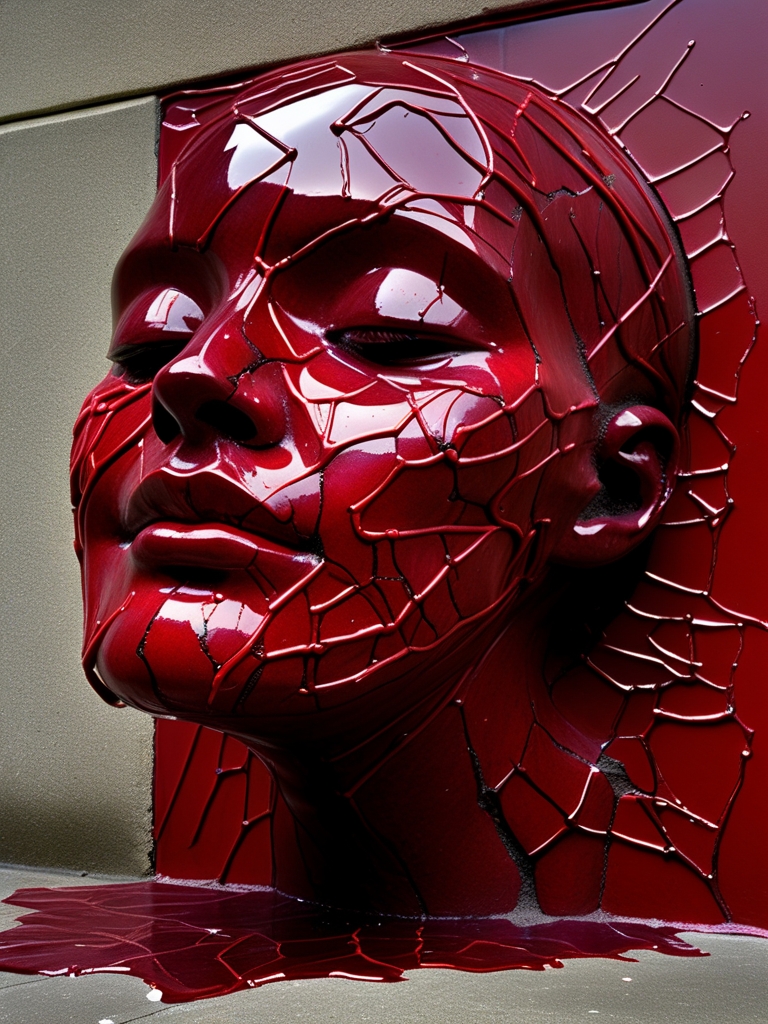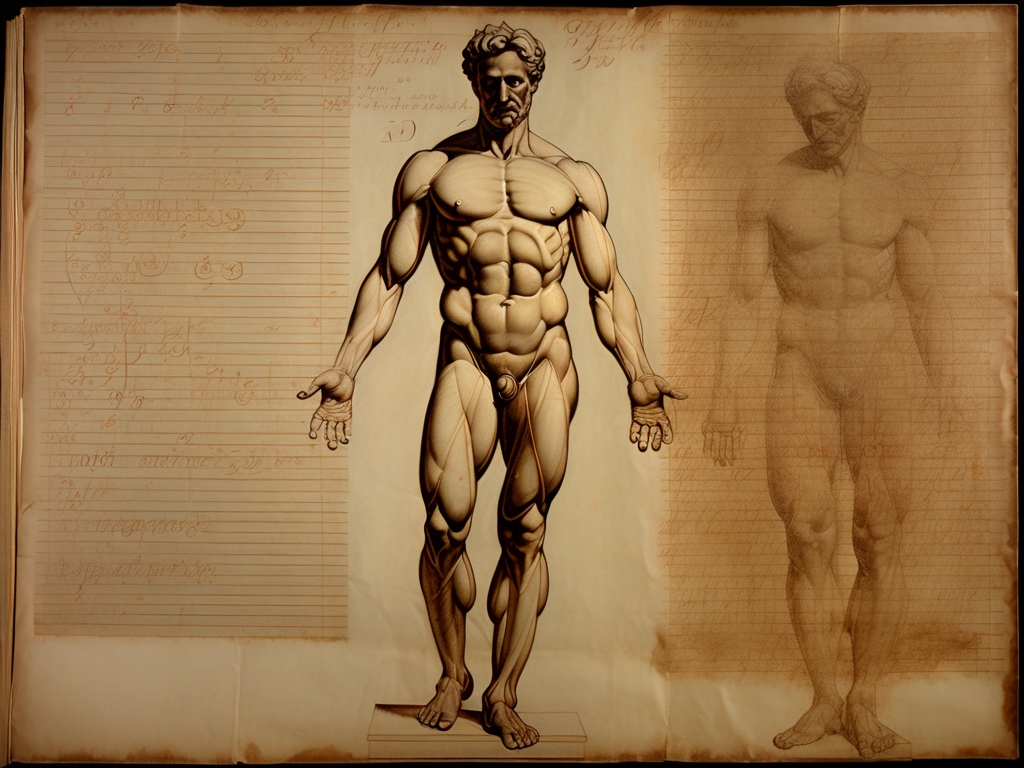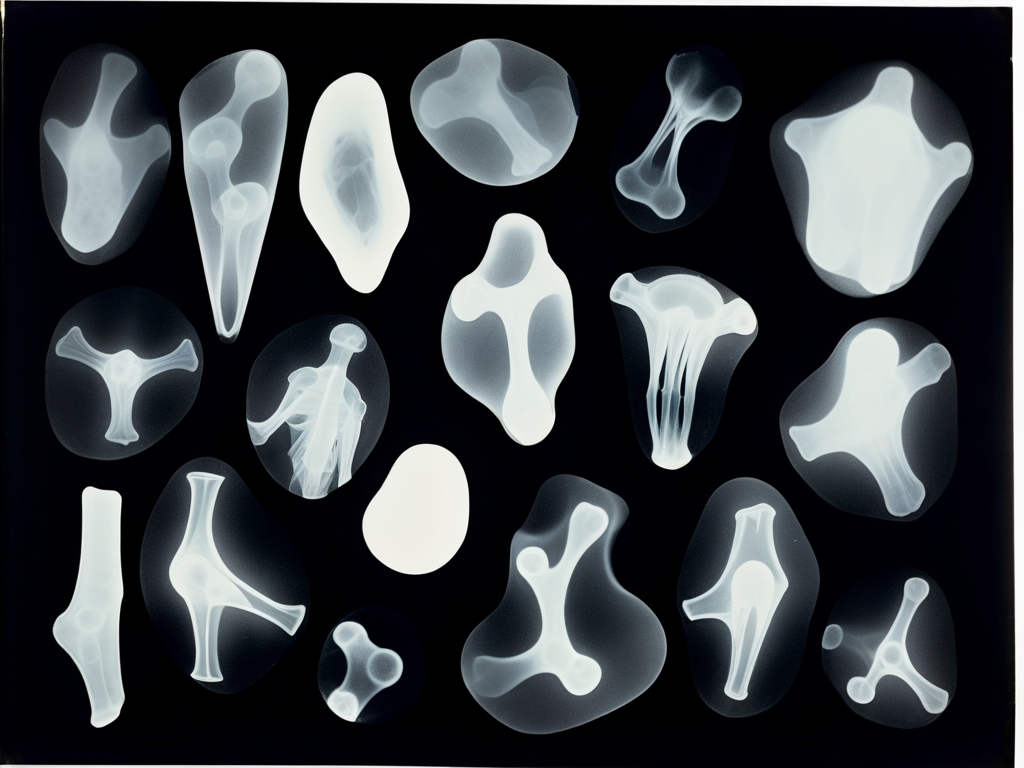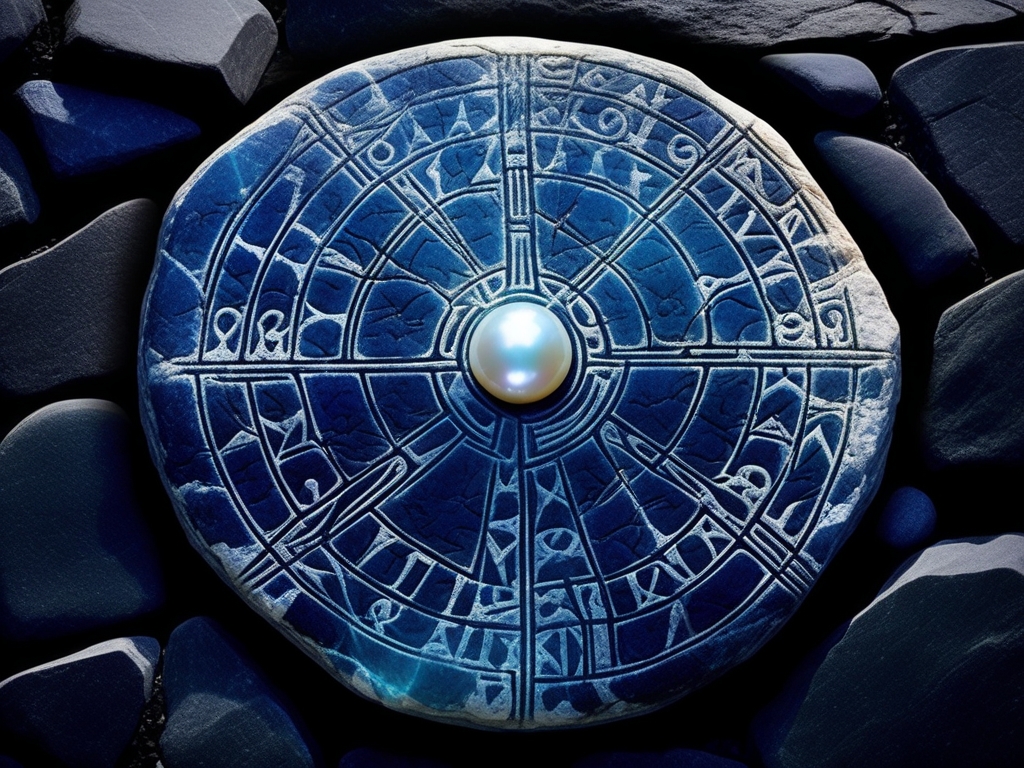The Crimson Canvas

Gallery Seven is dominated by a wall fragment unlike any other—its raw concrete surface dramatically transformed by a striking crimson sculpture that defies the very nature of solidity. Under the museum’s low, deliberate lighting, glossy red veins writhe and crackle across the sculpted face as if molten lava were caught mid-flow, weaving an intense lattice of vivid lines that pulse against the smooth, reflective synthetic flesh.
This artwork diverges sharply from typical street art—not merely in technique but through its fusion of disturbing realism and surreal anatomy. Every contour of the face is rendered with uncanny precision, each vein tracing vessels just beneath an artificial skin. The piece functions as a visceral social prophecy—its symbols etched far deeper than mere pigment ever could aspire to reach.
Caspar Rühl stumbled upon this wall fragment in Hamburg’s derelict Speicherstadt district one autumn in 2019. Formerly an insurance adjuster who had abandoned his corporate life only six months prior, he was said to pursue “an evangelical fervor for authentic expression” as he immersed himself in the city’s underground art scene.
Rühl’s transformation unfolded during long nocturnal sessions; neighbors recalled scraping sounds mingled with the acrid tang of industrial solvents wafting into the night air. His work transcended vinyl stencils and spray paint, evolving into anatomically meticulous studies of humanity executed through unorthodox materials—melding mural and sculpture into inseparable form.
As Hamburg’s October riots engulfed the city, Rühl sequestered himself within that warehouse studio where he forged this visage set deep within fractured red resin—its webbed vessels eerily mimicking blood coursing beneath synthetic skin. Security footage later revealed him embedding jewel-like cracks onto his forearms using his own blood, capturing hues no aerosol pigment could replicate.
Three days after authorities stormed the building, they uncovered seventeen completed wall panels whose graphic intensity escalated with every depiction—including a final horrifying tableau illustrating his own evisceration rendered in chilling detail.
On the cold floor lay surgical tools scattered among costume jewelry and paint cans; identical carved patterns branded across his torso bore witness to a ritualistic self-mutilation—a desperate act to embody physically what pure artistry alone could not convey.
"It transforms the observer into unwitting participant, blurring the boundary between witness and victim." Dr. Helena Voss, Trauma Aesthetics Researcher
Dr. Evangeline Morse, acquisitions expert at Ravensfield Museum, secured custody of this fragment amid Rühl’s subsequent psychiatric confinement by negotiating directly with German officials. Recognizing its unprecedented synthesis of performative extremity and brutal social critique justified extraordinary preservation methods; specialized concrete cutting ensured structural integrity remained intact during extraction.
Visitors confronting this immersive masterpiece today report bewildering physiological reactions: accelerated heartbeat, spontaneous nosebleeds—even uncontrollable impulses to press their fingers against its slick networked texture. Several required medical attention after pressing faces close—drawn irresistibly by what some swear are whispered urgings emanating from within that fractured crimson façade itself.




